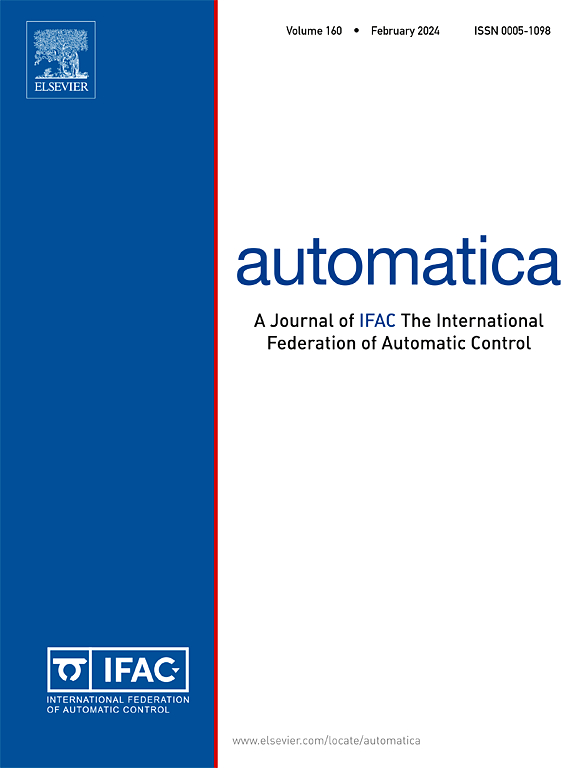具有随机切换模式的非因果系统辨识
IF 5.9
2区 计算机科学
Q1 AUTOMATION & CONTROL SYSTEMS
引用次数: 0
摘要
我们考虑具有随机切换模式(NCS-RSM)的非因果系统的识别,NCS-RSM是描述典型电力负荷管理和百货商店库存动态的一类模型。然而,同时识别因果子系统和反因果子系统,以及随机切换序列的存在,使得整个识别问题特别具有挑战性。为此,我们开发了一种基于期望最大化(EM)的系统识别技术,其中e步提出了一种改进的卡尔曼滤波器(KF)来估计因果子系统和反因果子系统的状态和切换序列,而m步包含一个切换最小二乘算法来估计单个子系统的参数。我们建立了该辨识方法的主要收敛特征,并给出了在温和条件下参数估计误差的界。最后,通过两个数值模拟验证了该识别方法的有效性。本文章由计算机程序翻译,如有差异,请以英文原文为准。
Identification of non-causal systems with random switching modes
We consider the identification of non-causal systems with random switching modes (NCS-RSM), a class of models essential for describing typical power load management and department store inventory dynamics. The simultaneous identification of causal-and-anticausal subsystems, along with the presence of random switching sequences, however, make the overall identification problem particularly challenging. To this end, we develop an expectation–maximization (EM) based system identification technique, where the E-step proposes a modified Kalman filter (KF) to estimate the states and switching sequences of causal-and-anticausal subsystems, while the M-step consists in a switching least-squares algorithm to estimate the parameters of individual subsystems. We establish the main convergence features of the proposed identification procedure, also providing bounds on the parameter estimation errors under mild conditions. Finally, the effectiveness of our identification method is validated through two numerical simulations.
求助全文
通过发布文献求助,成功后即可免费获取论文全文。
去求助
来源期刊

Automatica
工程技术-工程:电子与电气
CiteScore
10.70
自引率
7.80%
发文量
617
审稿时长
5 months
期刊介绍:
Automatica is a leading archival publication in the field of systems and control. The field encompasses today a broad set of areas and topics, and is thriving not only within itself but also in terms of its impact on other fields, such as communications, computers, biology, energy and economics. Since its inception in 1963, Automatica has kept abreast with the evolution of the field over the years, and has emerged as a leading publication driving the trends in the field.
After being founded in 1963, Automatica became a journal of the International Federation of Automatic Control (IFAC) in 1969. It features a characteristic blend of theoretical and applied papers of archival, lasting value, reporting cutting edge research results by authors across the globe. It features articles in distinct categories, including regular, brief and survey papers, technical communiqués, correspondence items, as well as reviews on published books of interest to the readership. It occasionally publishes special issues on emerging new topics or established mature topics of interest to a broad audience.
Automatica solicits original high-quality contributions in all the categories listed above, and in all areas of systems and control interpreted in a broad sense and evolving constantly. They may be submitted directly to a subject editor or to the Editor-in-Chief if not sure about the subject area. Editorial procedures in place assure careful, fair, and prompt handling of all submitted articles. Accepted papers appear in the journal in the shortest time feasible given production time constraints.
 求助内容:
求助内容: 应助结果提醒方式:
应助结果提醒方式:


